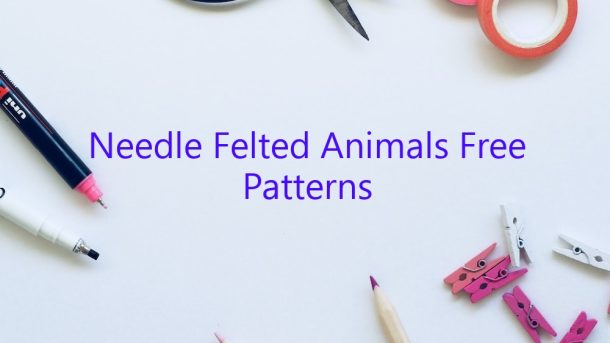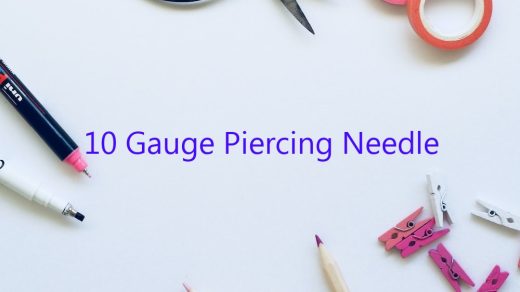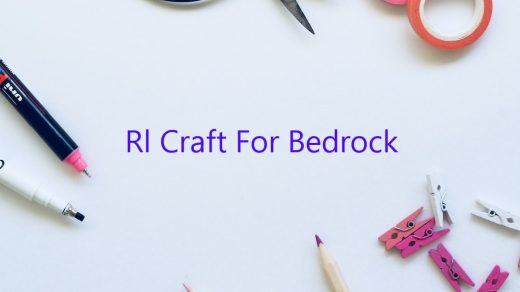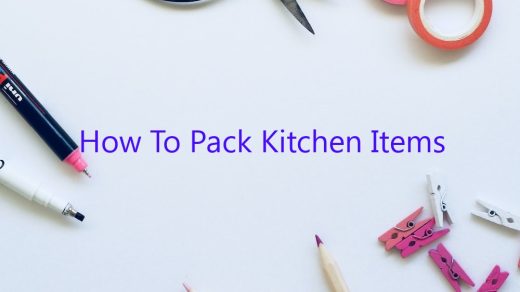needle felting is a great way to make fun and cute animals! there are a lot of different free patterns online, and here are some of my favorites:
for starters, this great little video tutorial from dariadaria on youtube shows you how to make a needle felted seal:
this next pattern is for a horse, and is a great tutorial to follow if you’re new to needle felting:
needle felted animals can be as simple or as complicated as you want them to be – this next pattern is for a very intricate hedgehog, but if you’re a beginner, you may want to start with something a little simpler:
and finally, this pattern is for a very cute little lamb:
have fun experimenting with needle felting, and happy crafting!
Contents [hide]
How do you make needle felted animals?
Making a needle felted animal is a fun, easy way to create a soft, huggable toy. Felting is the process of using a special needle to jab wool fibers together until they form a solid fabric. This process can be used to make all sorts of things, including animals!
To make a needle felted animal, you’ll need:
-Wool roving in a variety of colors
-A felting needle
-A foam pad or other surface to work on
Start by selecting a color of wool roving to use for the animal’s body. Cut a small piece of roving and roll it between your hands to create a ball.
Next, select a color of wool roving to use for the animal’s head. Cut a small piece of roving and roll it into a ball.
Place the ball of wool for the body on the foam pad and use the felting needle to poke it until it’s firm. Make sure to felt the wool in all directions to create a solid fabric.
Repeat the process with the ball of wool for the head, felting it until it’s firm.
Once the head and body are complete, use additional colors of wool roving to create the animal’s features. Cut small pieces of roving and add them to the head and body as needed. Use the felting needle to poke the wool into place and form the features.
Finish the animal by adding a tail, ears, and any other features you like. Use the felting needle to poke the wool into place and form the features.
Congratulations, you’ve just made a needle felted animal!
How long does it take to make a needle felt animal?
Needle felting is a fiber art that uses a special needle to jab and tangle fibers together to create a 3-dimensional object. Needle felting is a relatively easy craft to learn, and it doesn’t take long to create a basic animal shape. However, more complicated animals can take many hours or even days to complete.
The first step in needle felting is to create a base for your animal. This can be a simple ball of wool, or it can be a more complicated shape. If you’re making a simple animal like a rabbit, you can start with a ball of wool and then add features like ears and a tail. If you’re making a more complicated animal, like a dragon, you’ll need to start with a basic shape like a body and then add wings, legs, and a head.
Once you have your base, you can start adding wool to create the animal’s fur. Use a special needle to jab the wool into the base, and then use your fingers to tangle the fibers together. You’ll need to keep adding wool and jabbing it in until the animal is the size you want it to be.
The final step is to add details like eyes and a nose. You can use a variety of materials for this, including beads, buttons, and felt. Once the details are in place, your animal is finished!
Can you paint needle felted animals?
Can you paint needle felted animals?
Yes, you can paint needle felted animals. However, it is important to use the right type of paint and to take care when painting them.
When painting a needle felted animal, you should use acrylic paint. Acrylic paint is a water-based paint that is easy to apply and is non-toxic. It is also easy to clean up if you make a mistake.
Before you start painting, you should make sure that the animal is completely dry. This will help ensure that the paint does not smudge or smear.
When painting a needle felted animal, it is important to be careful not to get the paint on the fur. If you do, it may be difficult to clean up.
It is also important to make sure that the paint is completely dry before you handle the animal. If the paint is not dry, it may smudge or smear.
If you are not sure how to paint a needle felted animal, there are many online tutorials that can show you how.
Thank you for reading!
How do you make a felted rabbit?
Making a felted rabbit is a fun and easy project that can be completed in just a few hours. You will need some basic supplies, including wool roving, a felting needle, and soap.
To begin, select a piece of wool roving that is the desired color of your rabbit. Cut a length of roving that is twice the size of the rabbit you want to make. Roll the roving into a ball, and then use your fingers to form a basic rabbit shape.
Next, use a felting needle to poke the roving all over. This will help to felt the wool together and create a solid rabbit. Be sure to poke the needle into the ball of roving from all directions, and don’t be afraid to use a lot of pressure.
Once the rabbit is felted, use a bar of soap to give it a furry texture. Rub the soap all over the rabbit, making sure to cover every inch. The soap will help to create a realistic fur texture.
Your felted rabbit is now finished and ready to be displayed or used as a toy.
Can you use toy stuffing for needle felting?
There are many different types of stuffing that can be used for needle felting. Toy stuffing is one option, and it is a popular choice because it is affordable and readily available. However, there are some things to keep in mind when using toy stuffing for needle felting.
First, toy stuffing is not as dense as some other types of stuffing, so it can be more difficult to get a good felting effect. Additionally, toy stuffing is often made from synthetic materials, which can be a problem if you are trying to create a natural-looking fiber sculpture.
Despite these drawbacks, toy stuffing can be a good option for needle felting if you are looking for an affordable, readily available stuffing material. Just be aware of the limitations of this stuffing and adjust your project accordingly.
Is needle felting difficult?
Felting is a process that uses heat, moisture and pressure to create a fabric from loose fibers. There are several methods of felting, but the most popular is needle felting. This process uses a barbed needle to jab the fibers together, which causes them to mat and form a fabric.
Needle felting can be a difficult process to learn. The needles are sharp and it takes a lot of practice to create a cohesive fabric. It is also easy to make mistakes, which can lead to an uneven fabric.
However, with practice it is possible to create beautiful and intricate designs with needle felting. The results are worth the effort, and it can be a very satisfying process.
What is the best fabric to needle felt on?
Needle felting is a process of using a special needle to jab wool fibers together, which creates a dense, sturdy fabric. What is the best fabric to needle felt on?
The best fabric to needle felt on is one that is sturdy and has a lot of texture. Some good options include canvas, denim, or wool batting. Felting on a fabric that is too delicate or smooth can be difficult, as the needle can easily slip off the surface.
When choosing a fabric to needle felt on, it’s important to consider the thickness and texture of the fibers. Something like denim, which has a thick, sturdy weave, will be better able to withstand the jabbing of the needle and will create a more solid fabric. Fabrics with a finer weave, like cotton or silk, are more likely to tear or become stretched out during the felting process.
Another important consideration is the color of the fabric. Felting on a light-colored fabric can be difficult, as it can be difficult to see the progress of the needle felting and ensure that all the fibers are being felted together. A darker fabric can help to make the process more visible.
Overall, the best fabric to needle felt on is one that is sturdy, has a lot of texture, and is a darker color.




